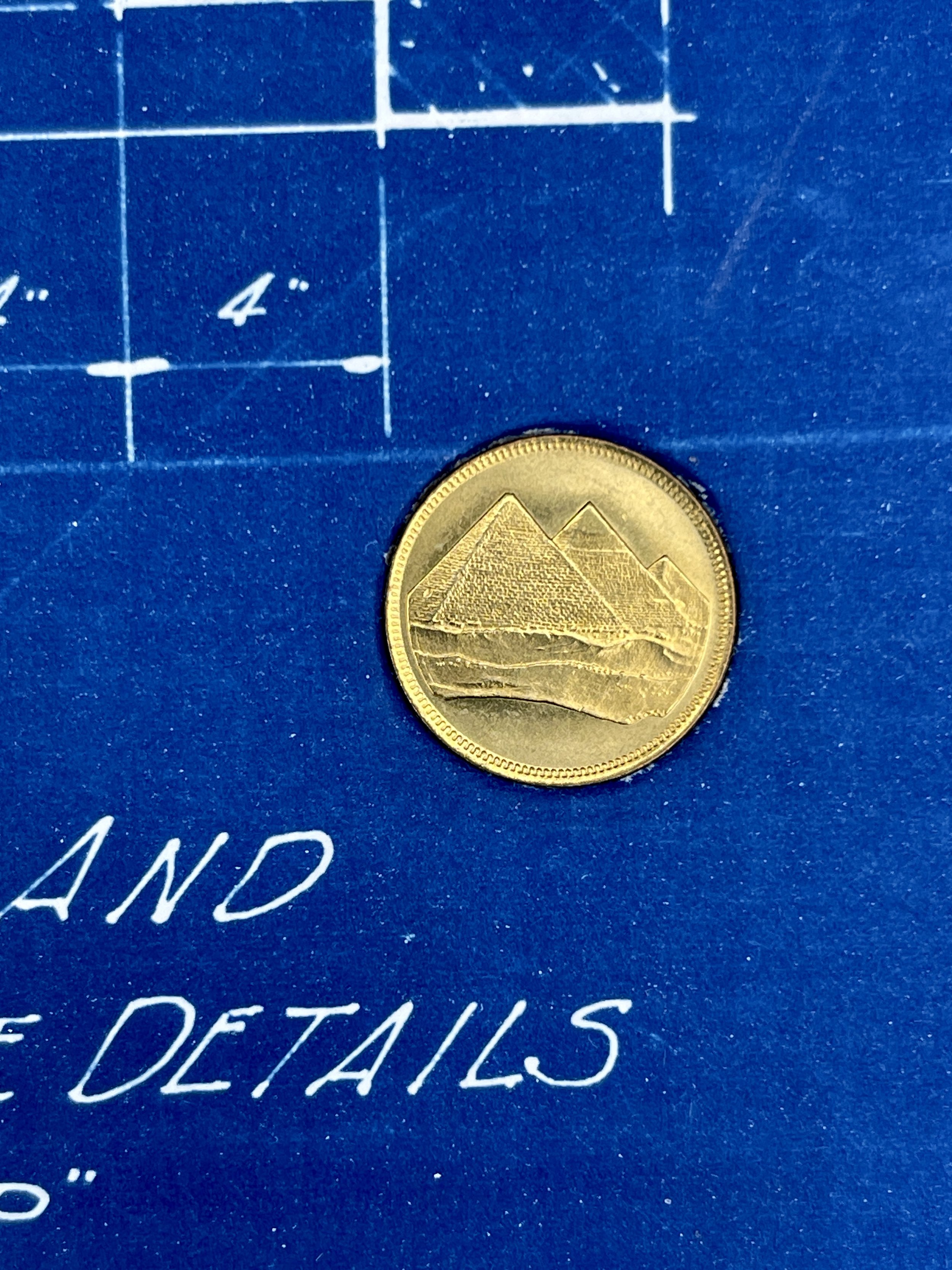Albert Kahn
This hand-sewn journal is made from 80# sulphite drawing paper stitched with Irish linen thread in the linked pattern that was developed by the ancient Copts and discovered in Nag Hammadi, Egypt in 1945. Its endbands are blue and white cotton, and its bookmark is blue satin ribbon. Its spine is ivory Naugahyde, and its boards are covered in 1944 Albert Kahn blueprints from the war-time conversion of the Indianapolis Chevrolet Plant.
The talisman in this book is a 1 piastre coin from Egypt, featuring a relief of the pyramids at Giza. You can find wonders everywhere if you’re open to seeing them.
This book is roughly 6” x 9” with a few more than 150 pages inside.
This hand-sewn journal is made from 80# sulphite drawing paper stitched with Irish linen thread in the linked pattern that was developed by the ancient Copts and discovered in Nag Hammadi, Egypt in 1945. Its endbands are blue and white cotton, and its bookmark is blue satin ribbon. Its spine is ivory Naugahyde, and its boards are covered in 1944 Albert Kahn blueprints from the war-time conversion of the Indianapolis Chevrolet Plant.
The talisman in this book is a 1 piastre coin from Egypt, featuring a relief of the pyramids at Giza. You can find wonders everywhere if you’re open to seeing them.
This book is roughly 6” x 9” with a few more than 150 pages inside.
This hand-sewn journal is made from 80# sulphite drawing paper stitched with Irish linen thread in the linked pattern that was developed by the ancient Copts and discovered in Nag Hammadi, Egypt in 1945. Its endbands are blue and white cotton, and its bookmark is blue satin ribbon. Its spine is ivory Naugahyde, and its boards are covered in 1944 Albert Kahn blueprints from the war-time conversion of the Indianapolis Chevrolet Plant.
The talisman in this book is a 1 piastre coin from Egypt, featuring a relief of the pyramids at Giza. You can find wonders everywhere if you’re open to seeing them.
This book is roughly 6” x 9” with a few more than 150 pages inside.






